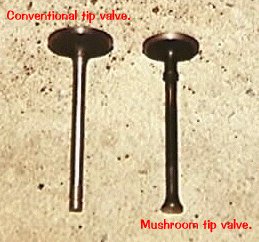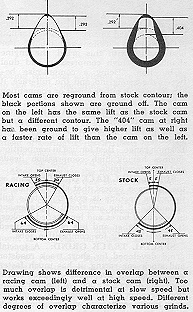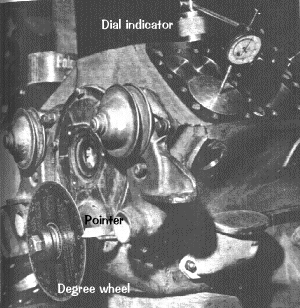

First, let's look at the way the cam moves the valves. Everything is inside the block, and there are no rocker arms in a flathead. The valves come in two types. One has a "normal" valve stem and the other has a stem that flares out at the end. This mushroom tip style uses split valve guides.




Cam specs from 1940 (left), 1941 (center), and modified (right). There are a couple of interesting things about the modified cam profile. The early modified cams as shown here were reground on stock cam cores. This means to make a different profile you removed metal, producing a smaller overall profile. The goal was greater duration and lift, with increased overlap (the period where intake and exhaust valves are open at the same time). This smaller cam meant the valves needed to be adjusted. Valve adjustment on a stock flathead was done by grinding the valve tips, or welding more metal to the valve stems. There were no adjustable parts of the system. A popular modification was, and still is, adjustable valve lifters. Ford tried adjustable lifters in a few truck engines, but these were very heavy and did not work well. I have never seen them recommended for high performance use. Aftermarket adjustable lifters are the standard. While difficult to adjust (look where the lifter is deep in the block) it is still better than grinding and welding.



Gary (Buzz) Giles sent this chart of cam specs:

After selecting the cam, you need to install it, making sure it is installed as intended. This process is called indexing the cam. Using a degree wheel and dial indicator, it proves that the valve events are happening at the correct times.
